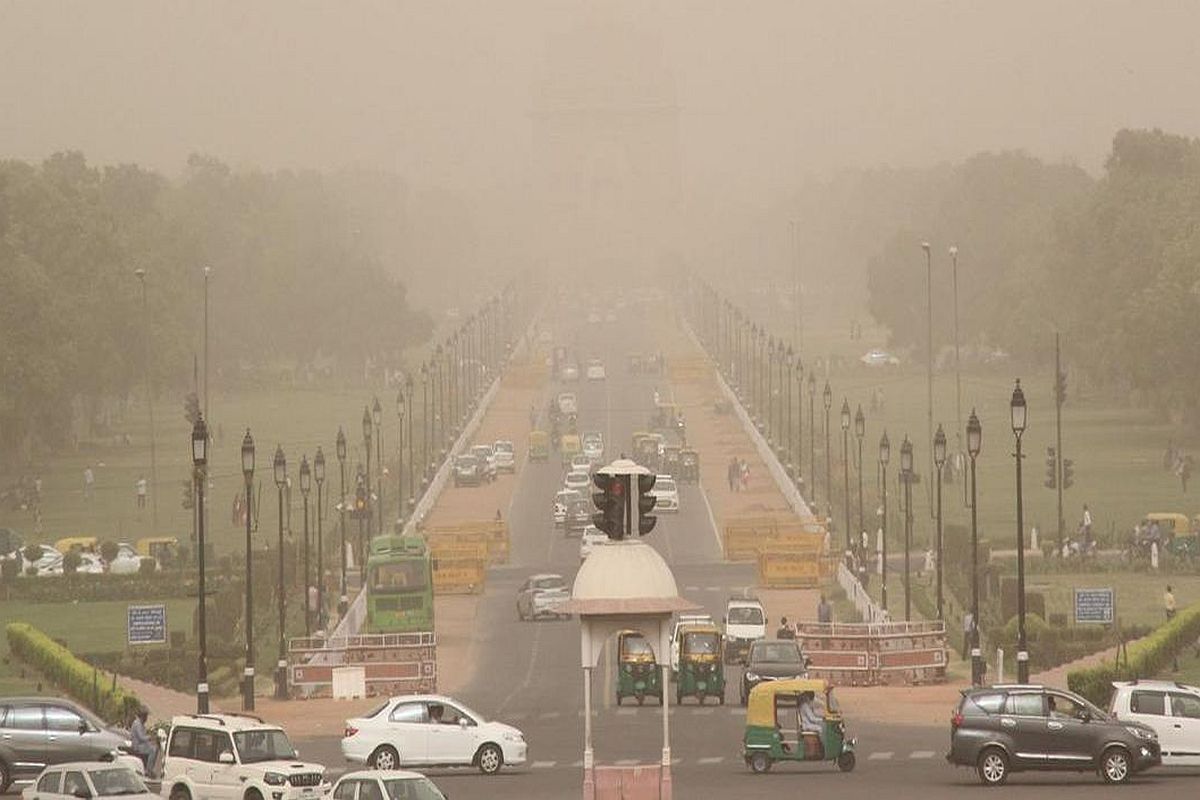Need collective response, not blame games, to combat air pollution: Rahul
The leader of the Opposition in the lower house pointed out that the poorest suffer the most being unable to escape the toxic air that surrounds them.
While the Finance Minister had provided Rs 4,400 crore for fighting air pollution in the last Budget, the leadership role the Union government was expected to play has not been in evidence. Punjab, Haryana, Rajasthan and Delhi are ruled by three different and often antagonistic political parties.

Representational image (File Photo: IANS)
While the campaign announced by Delhi Chief Minister Arvind Kejriwal to curb air pollution in the national capital this winter is a welcome initiative, it is difficult not to wonder if the essay is being attempted rather late in the day, and after reports of stubble burning have already come in from Punjab and Haryana. In defence of the state government, it must be said it had its hands full with managing the coronavirus epidemic, a task it accomplished with some success.
On the other hand, the fact that the virus affects lungs and could therefore be life-threatening for those whose bodies are already compromised by pollution ought to have been known a long time ago. While Delhi has promised to do what it can, and has appealed to neighbouring states to address the problems of stubble-burning, thermal power plants and brick kilns, it would be naïve to expect that these measures will make a significant difference to pollution levels in the region this winter.
Already air quality in many parts of the capital has turned unhealthy, with remaining area reporting pollution levels that pose health risks to sensitive groups. While the matrix used by pollution control agencies and health authorities is different, it must be said that all of Delhi ~ with nearly 300,000 coronavirus cases, more than 5,500 deaths and nearly 3,000 containment zones ~ constitutes a territory populated by a sensitive group. This applies in equal measure to towns making up the National Capital Region. About the only saving grace is that more and more people ~ either because they are wary of the virus or of the fines being levied on violators ~ are wearing masks, as useful for evading infection as they are for countering pollution.
Advertisement
It must be said though that the efforts of the Union government have been somewhat lacklustre insofar as northern India’s air pollution problem is concerned.
While the Finance Minister had provided Rs 4,400 crore for fighting air pollution in the last Budget, the leadership role the Union government was expected to play has not been in evidence. Punjab, Haryana, Rajasthan and Delhi are ruled by three different and often antagonistic political parties.
Additionally, all three parties have ambitions in the states they do not rule. In these circumstances, it was incumbent on the Union government to bring the state governments together on a bipartisan platform to evolve common prescriptions to tackle a problem that affects them all.
This has not been attempted at the political level and is a cause of regret. While the challenges posed by Covid-19 and hostile neighbours may have kept national leaders engaged, the business of governance cannot be conducted in bits and pieces.
More, much more should have been done but was not. Thus, while the winter of 2020 may see only marginal improvements in the air pollution situation, it is essential for all stakeholders to resolve that by 2021 at least they get their acts together. Or we will be back where we are next October.
Advertisement